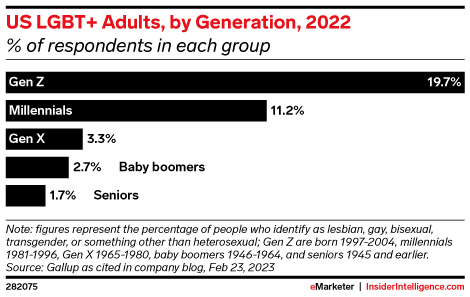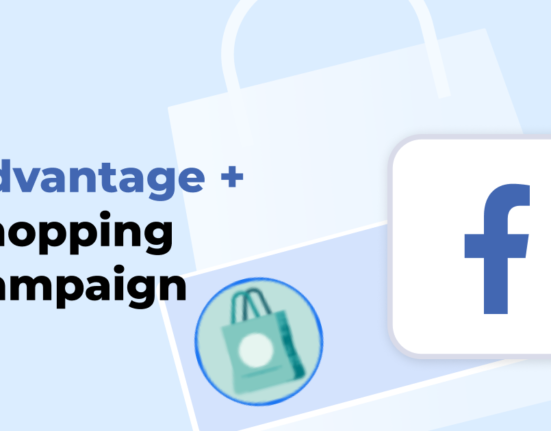LGBTQ+ identification and visibility worldwide, revealing a noticeable generational divide. This shift in societal norms carries significant implications for businesses and marketers, as consumer behavior aligns more closely with values of representation and authenticity. In this article, we will explore the findings of these studies, highlighting the increasing LGBTQ+ identification among younger generations and the importance of inclusive marketing practices in the evolving marketplace.
The Rise of LGBTQ+ Identification
A comprehensive Ipsos study encompassing 30 countries and over 22,500 participants aged 75 and under has revealed a growing LGBTQ+ identification among adults globally. On average, 9% of adults worldwide and 10% in the United States now identify as part of the LGBTQ+ community. The breakdown of identification categories shows that globally, 3% of adults identify as gay or lesbian, 4% as bisexual, 1% as pansexual or omnisexual, and 1% asexual. In the United States, these figures stand at 3% gay or lesbian, 5% bisexual, 1% pansexual or omnisexual, and less than 1% asexual.
Furthermore, the Ipsos data highlights that 2% of UK respondents identify as transgender, non-binary, or otherwise non-gender-conforming. In the United States and globally, transgender, non-binary, and other gender identities represent about 1% of the adult population.
The findings of a Gallup study conducted in the United States provide additional insights into LGBTQ+ identification trends. The study reveals that 7.2% of US adults identify as lesbian, gay, bisexual, transgender, or non-heterosexual, doubling the rate from a decade ago. Within this segment, over half identify as bisexual, while approximately one in five identify as gay, one in seven as lesbian, and one in ten as transgender. Other identities, such as queer, pansexual, or asexual, represent 1% to 2% of the surveyed adults.
Generational Divide in LGBTQ+ Identification: A significant generational divide in LGBTQ+ identification is evident from the studies. According to Ipsos, 18% of Generation Z and 4% of baby boomers identify as LGBTQ+. In the United States, 16% of Gen Zers and 15% of millennials identify as LGBTQ+, compared to 8% of Gen Xers and only 2% of boomers.
Gallup’s study further substantiates these findings, indicating that almost 20% of Generation Z, 11.2% of millennials, and less than 3.3% of older generations identify as LGBTQ+. Generation Z stands out, with higher identification rates in each LGBTQ+ category. Notably, bisexual identification predominates among younger generations, while older LGBTQ+ adults lean more toward gay identification.
The Impact on Business and Marketing
These shifting trends in LGBTQ+ identification have profound implications for businesses and marketers. LGBTQ+ individuals represent a growing consumer demographic bloc that values representation and authenticity. Brands must recognize the commercial significance of inclusive marketing practices in light of the evolving identities within this demographic.
Building Brand Loyalty through Genuine Representation: Genuine representation of the LGBTQ+ community fosters brand loyalty and affinity, particularly among Gen Z consumers. With 18% of Gen Zers identifying as LGBTQ+, brands must authentically engage with this audience. Businesses can establish lasting connections and cultivate trust with this demographic by doing so.
The Power of Inclusive Marketing
The increased visibility of LGBTQ+ individuals demands that brands navigate these demographics sensitively, acknowledging the spectrum of identities and experiences within the community. Inclusive marketing practices that authentically reflect and celebrate diversity can resonate with LGBTQ+ consumers and attract loyalty. This requires a genuine commitment to understanding their needs and aspirations and a willingness to go beyond tokenistic gestures.
Commercial Sensibility of Inclusive Marketing
Inclusive marketing practices are commercially sensible in the modern marketplace besides being ethically appropriate. As LGBTQ+ identification rises globally, brands prioritizing diversity and representation will gain a competitive edge. By aligning their values with those of their target audience, businesses can cultivate a loyal customer base and capitalize on the purchasing power of the LGBTQ+ community.
As we enter Pride Month, it is clear that LGBTQ+ identification is rising globally, with a distinct generational divide becoming increasingly evident. These shifts in societal norms have far-reaching implications for businesses and marketers, highlighting the need for inclusive marketing practices that genuinely represent and resonate with the LGBTQ+ community. By recognizing and catering to the evolving consumer identities, brands can establish meaningful connections, foster brand loyalty, and thrive in a marketplace that values authenticity and diversity.











Leave feedback about this